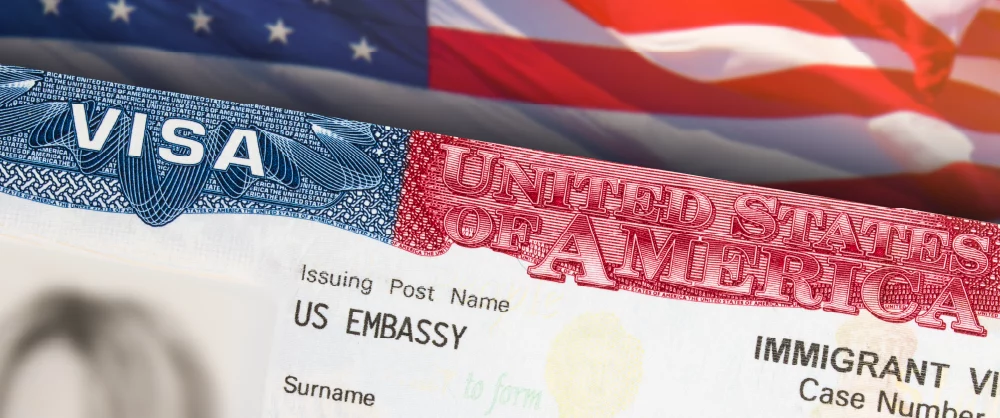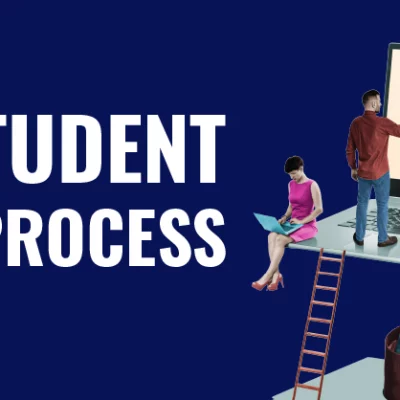Navigating the US Visa Maze: A Guide for International Students
Table of Contents
Did you know that every year, there are more than a million students from around the world seeking higher education in the United States? This may not come as astonishing news to many of you are you know it’s the # 1 student destination in the world. Thus, it can get very complicated when applying for a US student visa.
But, with this blog, we will guide you all about student visas and the types of student visas that are available for different sets of students. Once you get the hang of it, it’s not that big of a deal.
The important thing is that while applying for the visa, make sure that you have all the documents required for the kind of visa that you want to apply for to study in the United States of America.
Students who wish to study in the US must obtain a student visa. After you get your admission into one of the institutions in the US, you can start the process of applying for a visa. But, before leaping into the major step, let us walk you through the process.
Overview of student visa
It’s a general thumb rule that as a student who wishes to pursue study abroad in the US, you must apply for and obtain a student visa. To enter the United States of America, you can apply for a visa based on your course and study type which will determine what type of visa you will need.
What are the different types of visas for students?
If you seek to study in the US, it’s necessary to understand the types of visas to apply for depending on the course of study and country of residence.
F-1 Visa: Student Visa
Most international students apply for this type as it is one of the most popular types of visas designed for students who seek to study at accredited US institutions, colleges, language schools, etc. This is an important document that will allow you to enter the US certified by SEVP.
What is required for an F1 visa?
Before you make an application for a student visa, try and meet the following requirements:
- Valid passport
- Certified documents of your institutions
- Proof of full-time enrolment
- English language test score and proficiency
- Enough funds
- Proof of home residency
How to make an f1 visa application?
- Get accepted by the institution certified by SEVP before submitting. If your application is accepted by the institution, then you receive a form called the I-20 which you will need to apply for this type of visa.
- Pay the admission fee
- Fill the application (DS-160)
- Be prepared for the interview any time after application
- They will call you for the interview
What do the benefits of an F-1 visa for students?
Benefits:
- Enter the country with a valid visa as per you like
- Studying in the top and best study destinations in the world
- Flexibility to move around or stay in the US
Limitations:
- You are not allowed to work off-campus
- You must leave the country soon after finishing your studies
- Your dependents are not eligible for employment
Optional Practical Training (OPT)
Most students opt for this method as it allows graduates to gain hands-on-experience and contribute their education and training in the United States immediately. It leaves international students with no choice, but to take this which makes it an attractive way of bringing students, educating and retaining them in the country. In simple terms, it is a program allowing F-1 visa holders to gain practical work experience in their field of study.
Types of OPT
- Pre-Completion OTP is used during your term, and it is then deducted from the 12 OTP months that are available at each degree.
- Post- Completion OTP is quite commonly used among students where they save their OTP to use it after the end of their program at the institution.
Curricular Practical Training (CPT)
This is another form of training relating to the student’s major line of study which happens before the end date on the form of I-20 and with a year’s full time of CPt, it eliminates you from the eligibility for OTP. If we simply put it in layman’s terms, it is another form of work authorization for F-1 visa holders.
Eligibility criteria and application process
- To obtain the Curricular Practical Training (CPT), you must be on a:
- Valid F-1 visa for at least 2 years of full-time semesters
- Be associated with an internship that aligns with your field of study
- Need to have authorization before you begin any type of employment
- Registered classes with the University of California, Berkeley
- Supervisor cannot be a F-1 or J-1 student
J-1 Visa: Exchange Visitor Visa
As the name suggests, this type of visa is permitted to those students who want to take part in any of the approved programs for the reasons of studying, researching, demonstrating skills or even receiving a medical education or training. It is sponsored by an exchange program that is designated as such by the U.S. Department of State
Benefits:
- Research Scholar – Valid up to 5 years
- Short- term Scholar – Valid up to 6 months
- Specialist – Valid up to a year
Requirements:
- English Language Proficiency Scores
- Insurance and Health Coverage
- Having sufficient funds
- Valid passport
- Stick by the rule of the J-1 visa
- Meet the home residence policies
- Be enrolled in full-time program
- Have student accommodation
Common misunderstandings about the J-1 visa
- J-1 is not a looked at as a work visa
- A holder of a J-1 visa is not called an overseas worker
- J-1 does not allow students to get a second job
- J-1 program is for all types of applicants
- J-1 visa provides opportunities to work in a diverse environment
H-1B Visa: Specialty Occupation Visa
This is another type of program that allows any private entity in the US to hire a foreign employee in various occupations that require both theory and practical knowledge. This can be someone with a highly special knowledge or just someone with a bachelor’s degree or equivalent to one! It allows employers to sponsor foreign workers in speciality occupations.
How international students can transition from F-1 to H-1B status
If you want to change the status of your visa, you must show proof of a job offer in the U.S. and that your employer is willing to sponsor you for the visa which will cover the cost and legal formalities on their part.
In a nutshell, you have an:
Overview and importance of visas for international students studying and working in the US. The types of visas, their benefits, requirements and the one suitable for your pick!
Before you head on to apply to any institution in the US, you should understand the visa that’s applicable for you, then do thorough research on the same and apply for one that you need. You can start doing your research on the intakes in unis in the US, and then check out the institutions you want to apply to, and make sure the visa aligns with your study. With so many different types of visas in us, it can be quite confusing to see which one is suitable for you!




